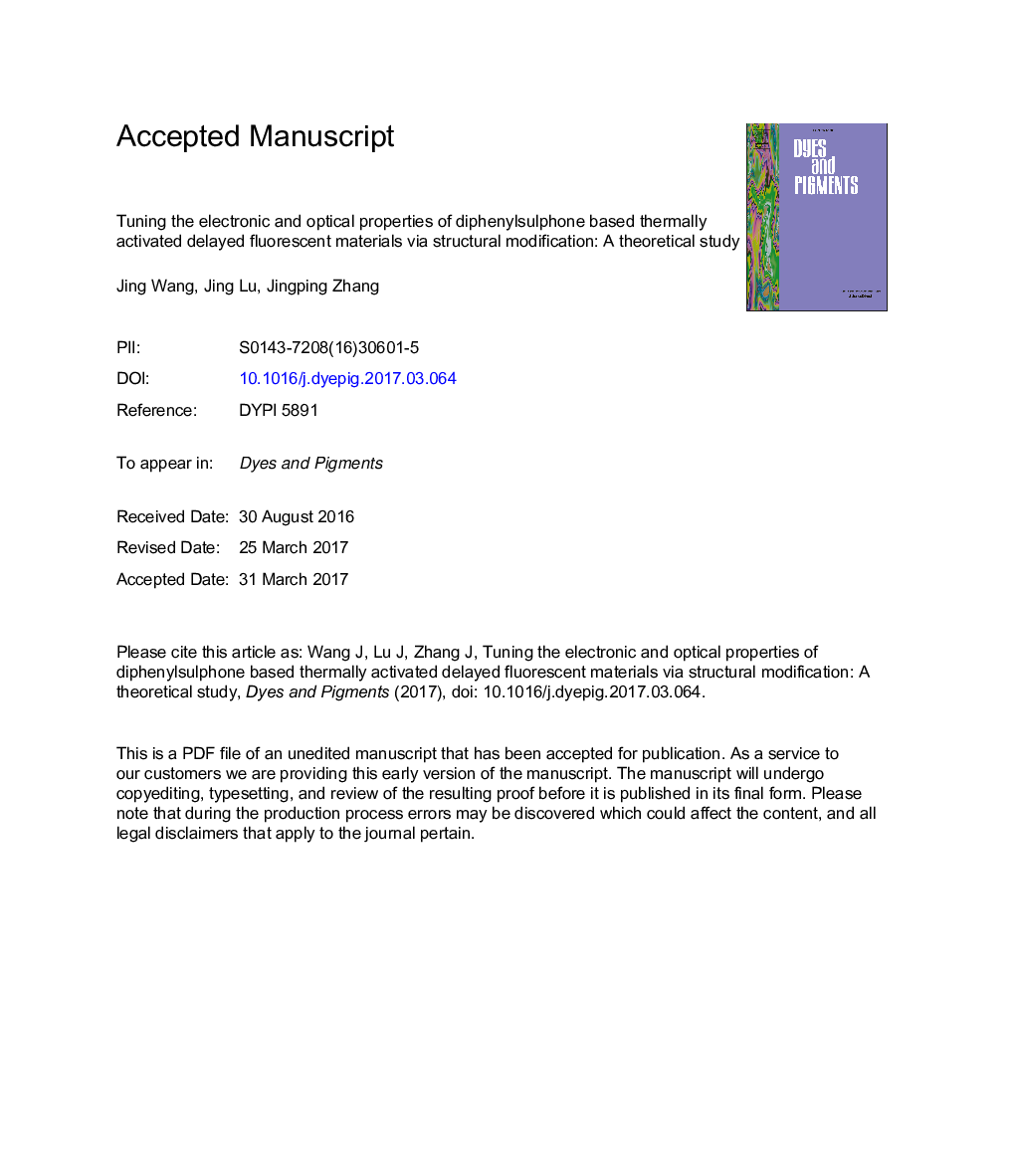| Article ID | Journal | Published Year | Pages | File Type |
|---|---|---|---|---|
| 4765864 | Dyes and Pigments | 2017 | 45 Pages |
Abstract
A series of designed diphenylsulphone based thermally activated delayed fluorescent materials have been investigated using quantum chemical approach. We focused on the variation in electronic and optical properties as different substituents being introduced to the parent molecule. The calculated results show that the broad range emission wavelengths (352-731Â nm) can be tuned via either H/R substitution on the donor/acceptor moieties or “CH”/N substitution on the donor moieties. The emission wavelengths are significantly bathochromic-shifted (15-252Â nm) by introduction of electron-accepting groups (CN) on the acceptor fragment or electron-donating groups (CH3) on the donor fragments. While, “CH”/N substitution on the donor fragment results in hypochromatic shifts (10-127Â nm). On basis of the hole-electron distributions analysis, the locally excited triplet states are close to or higher than the triplet intramolecular charge transfer state for most of the investigated molecules. Furthermore, the calculated singlet-triplet energy gap values of the designed four red emission molecules (0.007-0.014Â eV), two green ones (0.010-0.013Â eV) and a blue one (0.058Â eV) are relatively small, indicating that these investigated derivatives are excellent thermally activated delayed fluorescent candidates. Our theoretical studies provide hints for the design of efficient broad emission thermally activated delayed fluorescent materials in the future.
Keywords
Related Topics
Physical Sciences and Engineering
Chemical Engineering
Chemical Engineering (General)
Authors
Jing Wang, Jing Lu, Jingping Zhang,
